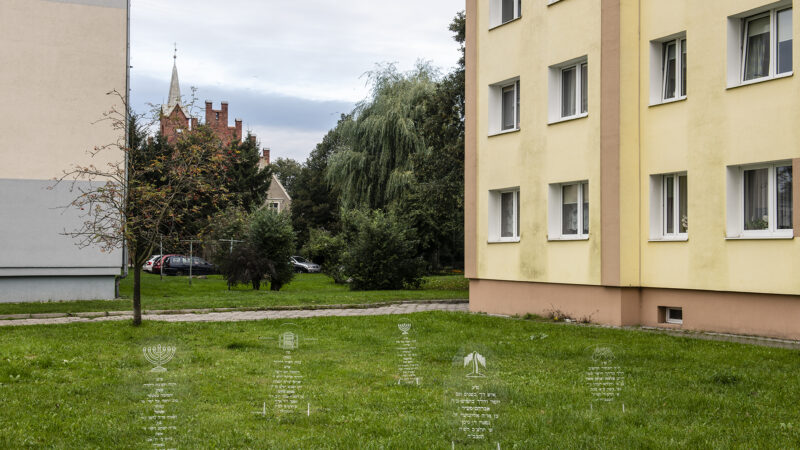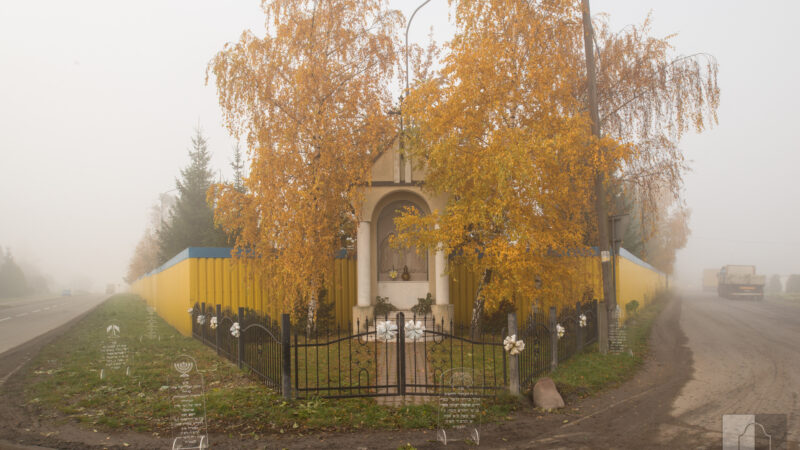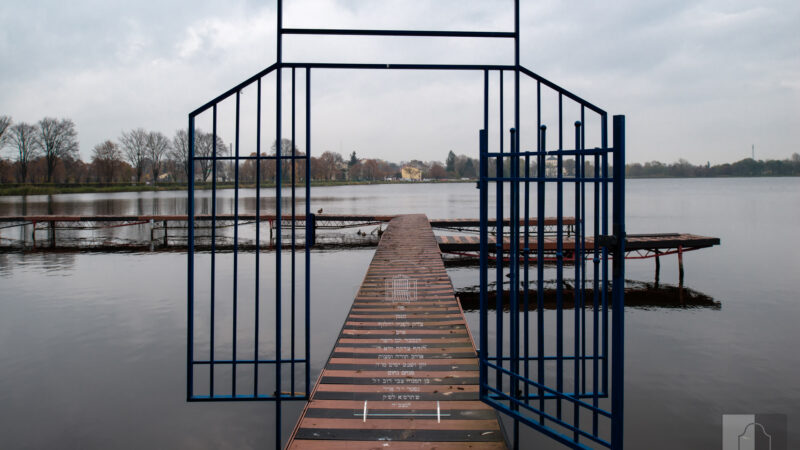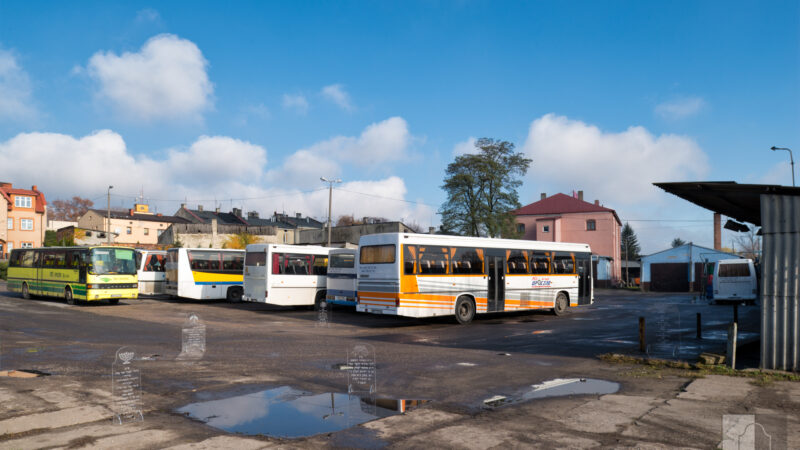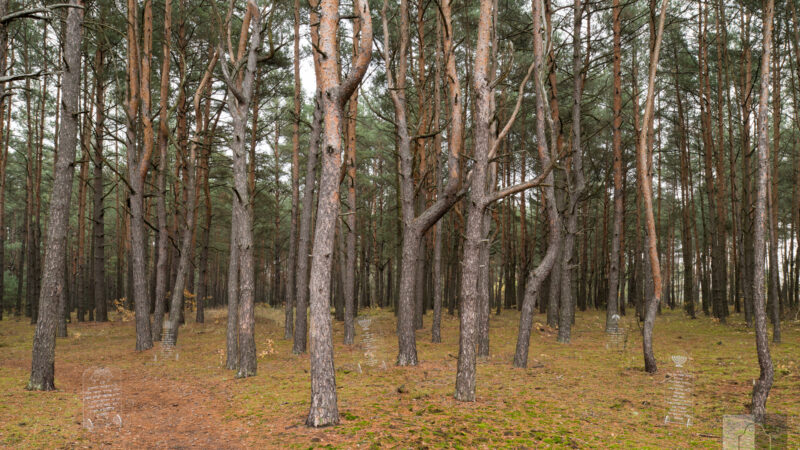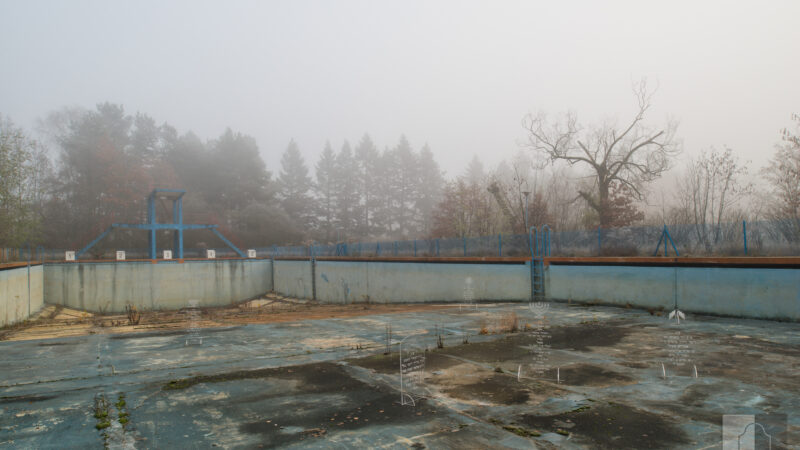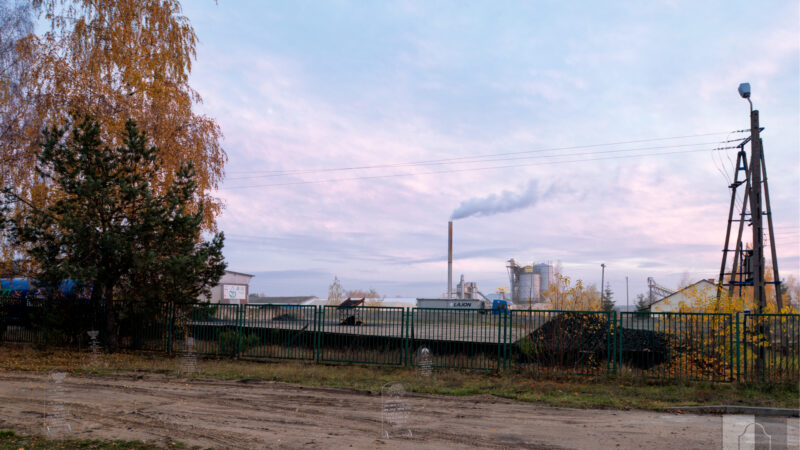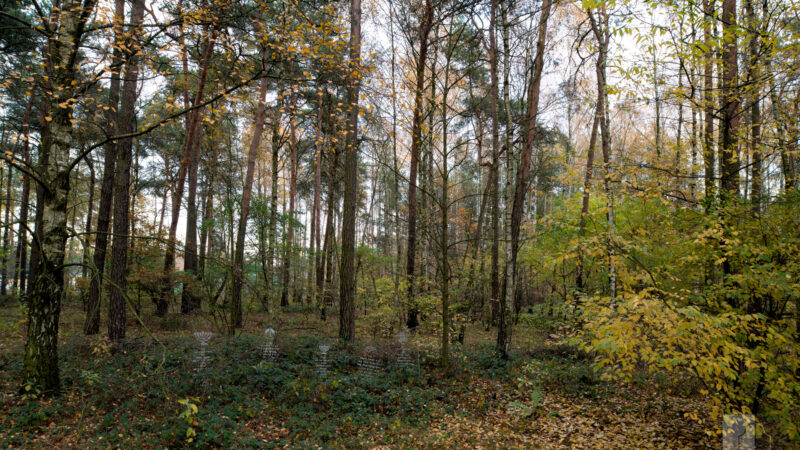“They came and packed everything into sacks. How can you do that to people?”
“Currently Absent” is a nationwide, photographic and historical project focused on the Jewish cemeteries that do no longer exist. Since 2017, it has been implemented by Katarzyna Kopecka – an ethnologist and creative producer, and Piotr Marek – a photographer. We talk with them about their passion for restoring the memory of common Polish and Jewish history and culture, and about people they meet while working on the project
27 November 2020
What was the origin of the “Currently Absent” project? (https://www.facebook.com/obecnienieobecni/)
Katarzyna Kopecka: The project was created during one of the work-related trips. Whenever we go somewhere, we check what is there to see in a given place. We are the type of people who, when looking for something, suddenly find something interesting, not necessarily related to what we are searching for. There was a neglected square in the centre of one town. We sat there to have a better look at what we could see. The square turned out to be the no longer existing Jewish cemetery. We were wondering if there are more places like that. We started the search and found about 500 forgotten and destroyed cemeteries with no trace of their sacredness. We were wondering how did the cemetery look like when it was functioning, hence the transparent matzevots. Like the ghosts of the past.
Piotr Pawlak: Of course, there are more destroyed cemeteries, but the criterion of inclusion in our project is the lack of matzevots or walls, or even the smallest information plaque.
Have you been interested in the history and culture of Polish Jews before?
Piotr Pawlak: In schools, the subject of Jews was discussed only in the context of the Holocaust, maybe sometimes also during the Polish lessons, but in general – it was a very, very secondary topic. On the other hand, it’s obvious that when learning about the history, tradition and culture of Poland, a country so strongly associated with Jews, it’s impossible not to know anything and disregard the subject. I remember that during our holidays, my parents and I explored a lot and the subject of Judaism appeared in the context of open-air museums, specific parts of cities, synagogues … On top of that, as a man born and raised in Łódź, I had some knowledge about the Jewish culture and the awareness of the contribution of Jews to the development of the city and, more broadly, the country. I’ve always treated Polish Jews as an obvious part of our history, a part of the whole. However, I’m in no way an expert on the subject. By the way, I consider the lack of education about these almost a thousand years of coexistence a great loss. By that I mean education on how the culture of Polish Jews developed during those years, how Polish and Jewish communities interacted with each other, how they infiltrated and intermingled, or existed side by side, developing independently in shared locations.
Katarzyna Kopecka: The history and culture of Polish Jews have been present in my life from an early age. I also come from the region of Łódź, or more precisely, Konstantynów Łódzki. In my hometown, one-third of the population was Jewish, so I’ve been able to notice traces of their presence since childhood. I’m a graduate of ethnology at the University of Lodz – I’ve always been interested in other religions and cultures, and my amazing professors have broadened my horizons.
What is the division of responsibilities in your two-person team?
Katarzyna Kopecka: It was a joint idea and the division of work is smooth. There are so many cemeteries that we had to split the work between the two of us and check approximately 1,200 places. You can say that Piotr is responsible for photos and their processing, and I’m in charge of the query, localisation of places, speaking with local museum staff and community members.
Where do you create the matzevots visible in the pictures?
Katarzyna Kopecka: The matzevots were created in the studio of the Academy of Fine Arts in Łódź. We were helped by our friend who, at that time, was finishing his studies there.
Piotr Pawlak: They were cut out of plexiglass plates with a laser plotter – a device which engraves letters and symbols. The shapes and sizes of the matzevots are identical to the real ones. I measured and redrawn selected tombstones from the cemetery on Miodowa Street in Krakow.
Who has already supported the project, in terms of finances and promotion?
Katarzyna Kopecka: From the very beginning, we could count on the help of Mr Krzysztof Bielawski from the Virtual Shtetl website (researcher of Jewish cemeteries and publicist, author of the book “Zagłada cmentarzy żydowskich” (“The Holocaust of Jewish cemeteries“), published by the “Więź” Publishing House – ed. note. https://1943.pl/artykul/cmentarze-zydowskie-w-polsce-pozostaja-w-dlugim-cieniu-zaglady/ ). Anyway, we often use the Virtual Shtetl, and the amount of work that has been put into the website is invaluable. Several Polish and foreign websites have written about us. After taking photos in the Łódzkie Voivodship, we were invited by TVP Polonia.
Piotr Pawlak: A the very beginning, our financial support consisted of a small grant from the city of Łódź. The rest is financed out of our own pockets. These days, also a little bit by fundraising at Zrzutka.pl. Our project is quite niche and serious, so it’s not easy to break into the media with it. Cemeteries usually have explicit connotations, but we want to show how common the Jewish communities were and how diverse life in Poland used to be through our pictures.
How do the residents of the places you visit react to the photo sessions?
Katarzyna Kopecka: We don’t encounter bad attitudes, just curiosity. People often come and ask what we are doing and why. Some are surprised that there was a cemetery before the war in a given place, others know the place from stories. There are also some people who have memories of the past.
Piotr Pawlak: I would describe it as “surprisingly positive” and “ignoring”. Some passers-by asked if the matzevots would remain there permanently, and when they heard a negative answer, they stated that “they should”. Others asked “what is this initiative?”, and were clearly interested in the history of the place. Some people remember the Jews, or at least, the cemetery itself. The majority, busy with their affairs, ignored us and acted carefully in order not to get into the frame.
Have you heard any interesting stories from the residents?
Piotr Pawlak: There is one story that has stuck in my memory the most. When we set up the matzevots, we were approached by an elderly gentleman who was watching us from the very beginning and said “it was a bit further, there was a wall here” and drew a line in the air with his hand. It turned out that he’s been living next door to that place from birth, he was friends with Jewish children, and their parents knew each other. He told us how the cemetery was destroyed by German soldiers, how the later abandoned cemetery perished until it was finally liquidated. With tears in his eyes, he summed up: “They came and packed everything into sacks. How can you do that to people?”. He didn’t want to give us any contact information or continue his story, so we shouldn’t disclose where it happened.
Katarzyna Kopecka: We’ve heard a lot of interesting stories. Sometimes they are drastic, describing bones and human remains dug out by workers on the construction site, and sometimes, they recall the history of the town and its pre-war residents. Sometimes, when we call a cultural institution, we meet local history enthusiasts who provide us with a small treasure trove of knowledge.
How many places have been photographed so far?
Katarzyna Kopecka: Forty-eight cemeteries. Hundreds are still waiting.
How else, apart from the photo boards, do you plan to develop the project?
Piotr Pawlak: Initially, it was supposed to be a purely photographic project, very economical in form and content. Only pictures with names of the places. It quickly turned out that it’s impossible because the material is very extensive.
Katarzyna Kopecka: The project will result primarily in the reconstruction of the currently non-existent traces of history and their reference to our everyday life. The obtained documentation will serve not only as the material for creating an exhibition and publishing an album, but we also plan to make a documentary, for which we constantly collect records and search for protagonists.
Interview conducted by: Anna Kilian
Photos Piotr Pawlak

